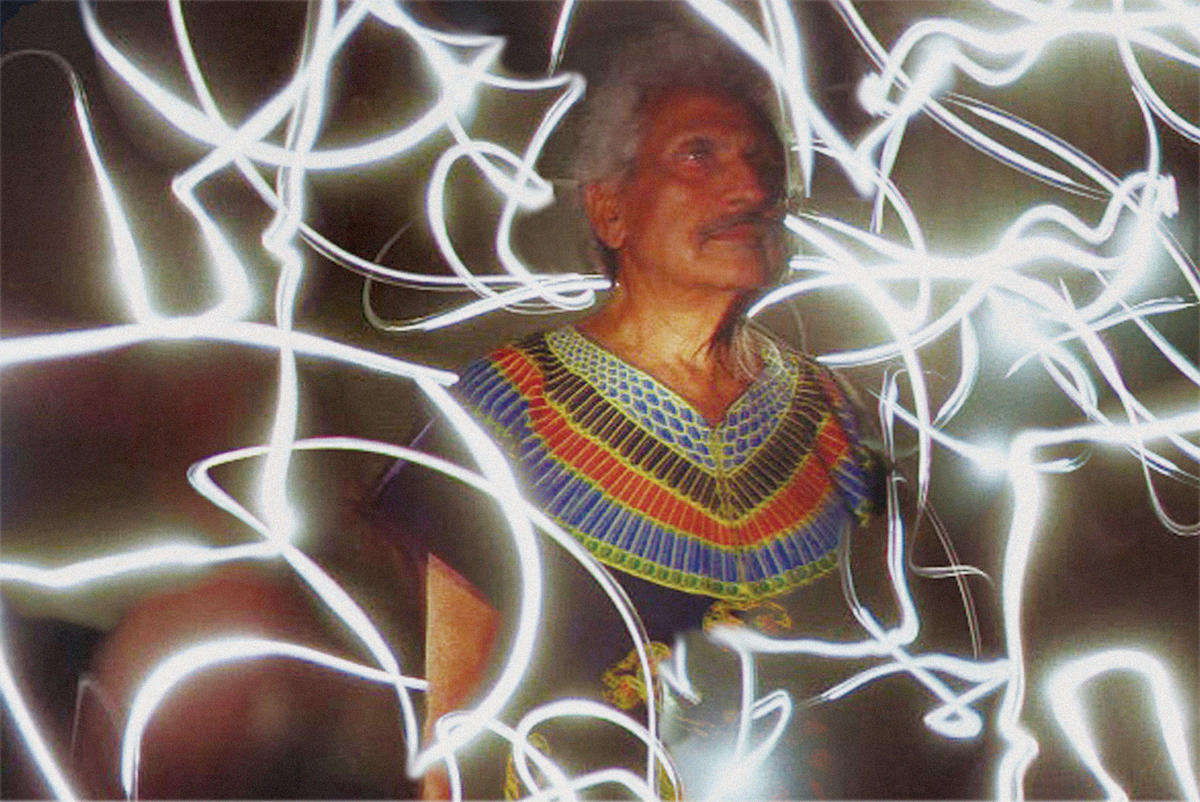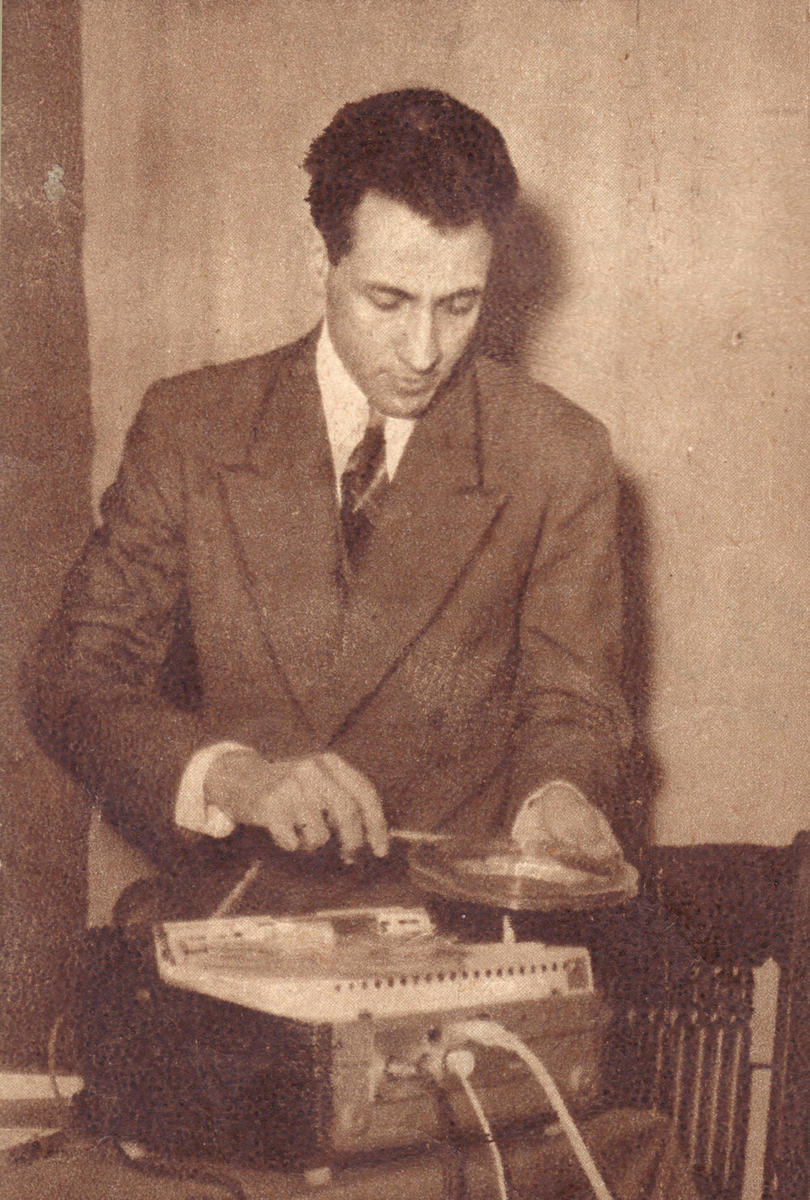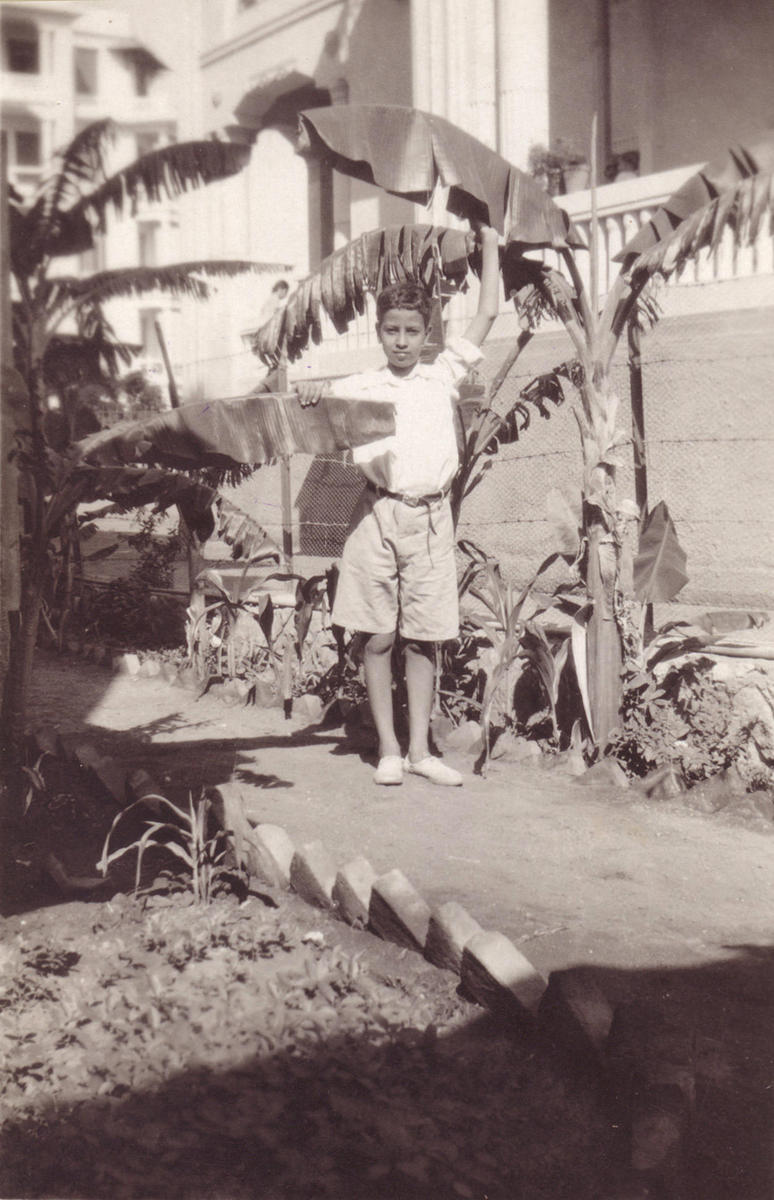
For about ten years, Halim El-Dabh existed only as a mysterious footnote to almost every kind of music that I found myself drifting toward, and the trail that would lead me again and again to his name was always the same: once I’d become fairly familiar with the canon of a particular genre of music, be it modern classical, traditional Arabic, or electronica, I’d grow curious about the fringe artists in that field — the outsiders, the artists who didn’t fit in — the perverts. Without exception, that’s where I’d find him, as the very occasional, odd footnote. He was (as a few biographers have called him) a Zelig-like character, seemingly implicated in almost every modernist project of the 20th century, a maverick or “experimental” artist, who, for reasons rarely elucidated, wasn’t deemed worthy enough to be part of the official narrative of modernism.
In the pre–Google/mp3/Napster world, the question of who El-Dabh was proved difficult to answer. From about 1982, when I first heard of him — in connection to another “brother from outer space,” Sun-Ra — until the mid to late Nineties, I never heard one note of his music; it was impossible to find. Plus, the word on the street (specifically, in those histories of modernism) was that it wasn’t really worth the effort to find out who he was. Even the biographical information on him was confusing and skimpy. The impression I formed was of some sort of freaky recluse who may or may not have been cloistered in a backwater of ivory-tower academia, a composer who couldn’t make it in the real world. It turns out I was right about the freakiness and, to a lesser degree, academia. El-Dabh was born in Cairo, in 1921, into wealth and music. A member of a large Coptic family, he started to display his musical talents very early on but trained as an engineer and wasn’t really encouraged to take up music as a career. All throughout the 1940s, he was an active participant in Cairo’s cultural life — he’d studied piano and darbuka and played everything from jazz to classical to traditional Arabic music in nightclubs. At the same time, he was also experimenting with electronic music (more on this later).
The year 1949 was a turning point for El-Dabh. His performance of one his own piano compositions, It Is Dark and Damp on the Front, marked his arrival and became his ticket for a Fulbright grant to study music in the United States. One of my favorite stories about El-Dabh is how, upon arriving in Colorado in 1950, where Igor Stravinsky and John Cage were there to greet the young sensation, he basically took care of formalities and then headed straight to the Hopi and Navajo Reservations in the Southwest, where he lived and studied Native American music before returning to study with Aaron Copland. After that, El-Dabh found himself in 1950s New York, where he fell in tight and formed friendships and collaborations with most of the artistic innovators of the time — Morton Feldman, John Cage, Edgar Varese, Otto Luening (with whom he composed one of his electronic masterpieces, Leiyla and the Poet), and Martha Graham (with whom he composed the score for her masterpiece, Clytemnestra). After the 1950s, El-Dabh’s activities are too numerous and varied to detail here. He did end up becoming one of the leading ethnomusicologists in the world. He also traveled the globe in search of indigenous music and culture, lived and taught in Ethiopia for some time, and composed the only opera ever written about the Kent State tragedy of May 1970 (Opera Flies).

This all brings me back to a CD called Crossing Into the Electric Magnetic, which was the first music by El-Dabh I actually heard. This was sometime in the late 1990s. Electric Magnet was a compilation of his early electronic music that included a piece of music that is not-so-arguably the first piece of Music-Concrete, recorded at The Middle East Radio Station, in Cairo in 1944,and predating Pierre Schaffer’s Etude Aux Chemin De Fer (which was the first piece of Music-Concrete) by a full four years. That composition, Wire Recorder Piece, completely blew my mind and helped me understand why El-Dabh had remained a footnote for so many years: modernism could never tolerate the figure of the holy fool. The truth is that El-Dabh was never a modernist, though he used the various streams of the movement as ritual and mask. To paraphrase the Sufi trope, El-Dabh was in modernism but was never of it. Take Wire Recorder Piece. It’s electronic music that walks and talks like a duck but isn’t. With the music sounding like some cross between Herschel Gordon Lewis’ splatter classic Blood Feast and Varese, it’s hard to tell if the piece is taking itself way too seriously or is some elaborate, exotic take on a genre that El-Dabh was making up as he recorded it. It’s this uncanny quality of being neither “good” nor “bad” (nowadays bad is called “kitsch”) that marks so much of El-Dabh’s art. And it’s only in the context of the magic circle (which El Dabh continuously redraws) of ritual, mask (the grotesque), and the holy fool that the space and time of his work becomes apparent; they form the thread that ties it all together. El-Dabh was (and is) always after bigger fish to fry and with the slowly encroaching death of modernism and all the post-isms of the last hundred years or so, El-Dabh’s touching and idiosyncratic commitment to sound as the primal source of transcendence may finally get its due.
